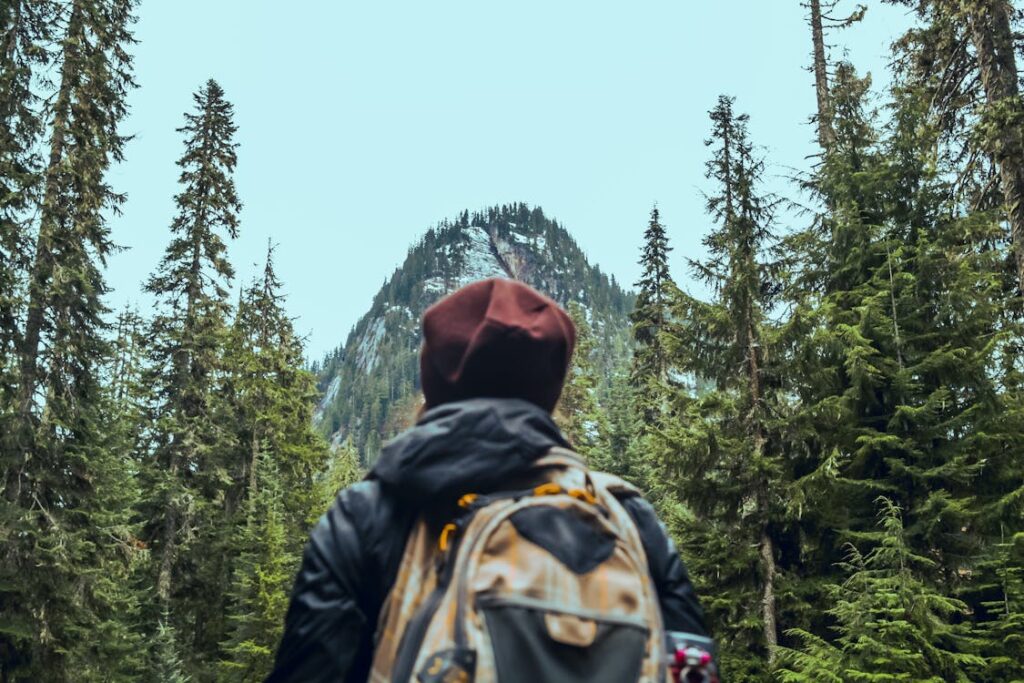
Mountain hikes are not just exercises in endurance or quests for the ultimate view—they’re full-on engagements with the raw, untamed heart of nature herself. And while soaking in that eye-watering vista from a mountain peak or feeling the crisp, cool air fill your lungs are irreplaceably exhilarating experiences, encountering the locals (and by locals, I mean wildlife) adds a whole other layer of excitement and, let’s be honest, a bit of apprehension.
Preparing for Your Hike: Knowledge and Essentials
Researching Local Wildlife
Before you set foot on the trail, it pays to know who you might be sharing the path with. Whether it’s the majestic deer, the stealthy mountain lion, or the often misunderstood bear, understanding these species and their behaviors can turn a potentially scary encounter into a respectful side-by-side existence, even if just for a fleeting moment.
- Understanding species you might encounter means not only knowing what they look like but getting an idea of their habits and how they might react to a human presence.
- Recognizing signs of wildlife presence such as tracks, markings, or droppings helps you stay aware and make informed decisions on the trail.
- Learning about wildlife behavior is crucial, especially for animals like bears and mountain lions, whose reactions to humans can vary widely.
Essential Safety Gear
Going into a hike well-prepared means having more than just a good pair of boots and a water bottle. Depending on where you’re hiking, it might be wise to pack:
- Appropriate clothing and footwear to protect you from the elements and any brambly encounters.
- Safety tools like bear spray or a whistle can help deter wildlife in a pinch.
- First-aid essentials are crucial, as even a small injury can become a big problem in the wilderness.
Educating Yourself and Your Group
Knowledge is power, especially when it comes to wildlife encounters. Make sure everyone in your group knows:
- Safety protocols for wildlife encounters, because panicking can make a situation worse.
- The importance of keeping wildlife wild—feeding animals can alter their natural behaviors and make them dependent on or aggressive toward humans.
- Group guidelines and signals for encounters can keep everyone on the same page if you spot wildlife.
On the Trail: Recognizing and Respecting Wildlife Habits
Maintaining Awareness
The difference between a surprise encounter and a peaceful observation can often come down to awareness.
- Observing your surroundings and not just the trail ahead can help you spot wildlife before it’s right on top of you.
- Listening for signs of wildlife can alert you to their presence before you see them.
- Recognizing the time of day when wildlife is most active—dawn and dusk—are prime times for many animals.
Respecting Their Space
Wildlife encounters can be thrilling, but respecting the animals’ space is paramount.
- Understanding animal comfort zones helps prevent stress for both you and the animal.
- Strategies for keeping a safe distance include using zoom lenses for photos instead of getting closer.
- What to do if you accidentally get too close involves backing away slowly and giving the animal space to move off.
Encountering Predators
The very word ‘predator’ can spark fear, but knowledge can help you stay calm.
- Identifying behaviors of predators such as a mountain lion or bear can indicate their comfort level.
- How to make yourself less attractive to predators involves making noise and traveling in groups.
- Steps to take if a predator is interested or approaches include speaking calmly, making yourself appear larger, and using bear spray if necessary.
Specific Animal Encounters: Dos and Don’ts
Bears
Bears are perhaps what people worry about most when hiking in the mountains.
- Making noise to avoid surprising them is key.
- What to do if you see a bear at a distance vs. close up varies greatly—stay calm, make yourself known, and back away slowly if it notices you.
- How to use bear spray—only as a last resort and learning before you go how it works.
Snakes
Snakes are often misunderstood and can usually be avoided by being vigilant.
- How to spot snake habitats—rocky areas, underbrush, and sunny patches.
- Steps to take if you encounter a snake on the trail include stopping, giving it room, and slowly backing away.
- First-aid measures for snakebites remind us why it’s essential to hike with a buddy and have a plan.
Insects and Smaller Critters
Even the smallest creatures can have a big impact on your hike.
- Avoiding bites and stings means wearing protective clothing and using insect repellent.
- Tick prevention and removal are essential for avoiding diseases like Lyme disease.
- Respectful observation of smaller wildlife ensures their safety and yours.
Post-Encounter: Ensuring Safety and Reporting
Assessing the Situation
After an encounter, take a moment to:
- Determine if any injuries have occurred and treat them as needed.
- Decide whether to continue your hike based on everyone’s comfort level and the wildlife’s activities.
- When to retreat safely—sometimes, it’s best to give wildlife plenty of space and choose a different path.
Reporting Encounters When Necessary
Not every wildlife encounter needs to be reported, but some do for the sake of safety and conservation.
- Understanding when and how to report wildlife encounters can help authorities manage areas for safety and conservation.
- The importance of reporting for conservation efforts ensures a safe coexistence between humans and wildlife.
- Agencies or organizations to report to might include local park services or wildlife conservation groups.
Reflecting on the Experience
Every wildlife encounter is an opportunity to learn and grow.
- Sharing your experiences responsibly can inspire others to respect wildlife.
- Learning from each encounter helps you become a more informed and prepared hiker.
- How to educate others based on your experiences spreads the importance of conservation and safe wildlife practices.
The Bigger Picture: Conservation and Your Role
Understanding the Impact of Human Activity
Our presence in natural habitats can have a profound impact.
- The effect of human presence on wildlife behavior can lead to negative interactions or habituation.
- How to minimize your footprint involves staying on trails, packing out trash, and keeping noise to a minimum.
Ethical Photography and Observation
Capturing that perfect photo should never come at the expense of wildlife.
- Guidelines for respectful wildlife photography emphasize observation from a distance.
- The impact of social media on wildlife conservation can be positive when used to educate and inspire responsible behavior.
Supporting Wildlife Conservation Efforts
You don’t have to be a scientist to make a difference.
- Volunteering and donation opportunities abound for those passionate about wildlife conservation.
- Educating others on the importance of conservation can spread awareness and foster respect for nature.
- Participating in citizen science projects offers a hands-on way to contribute to scientific knowledge.
Summary
Encountering wildlife while hiking in the mountains can be one of the most rewarding aspects of exploring nature. By preparing adequately, staying aware and respectful on the trail, understanding how to react during specific animal encounters, managing post-encounter actions properly, and recognizing our role in conservation, we ensure not just our safety but the protection and respect of the natural world around us. Let’s tread lightly and carry a big sense of stewardship, ensuring that these magnificent creatures and their homes remain for generations to come.
By embracing these principles, each one of us plays a crucial role in the conservation story, ensuring the magic of our mountain adventures endures.







